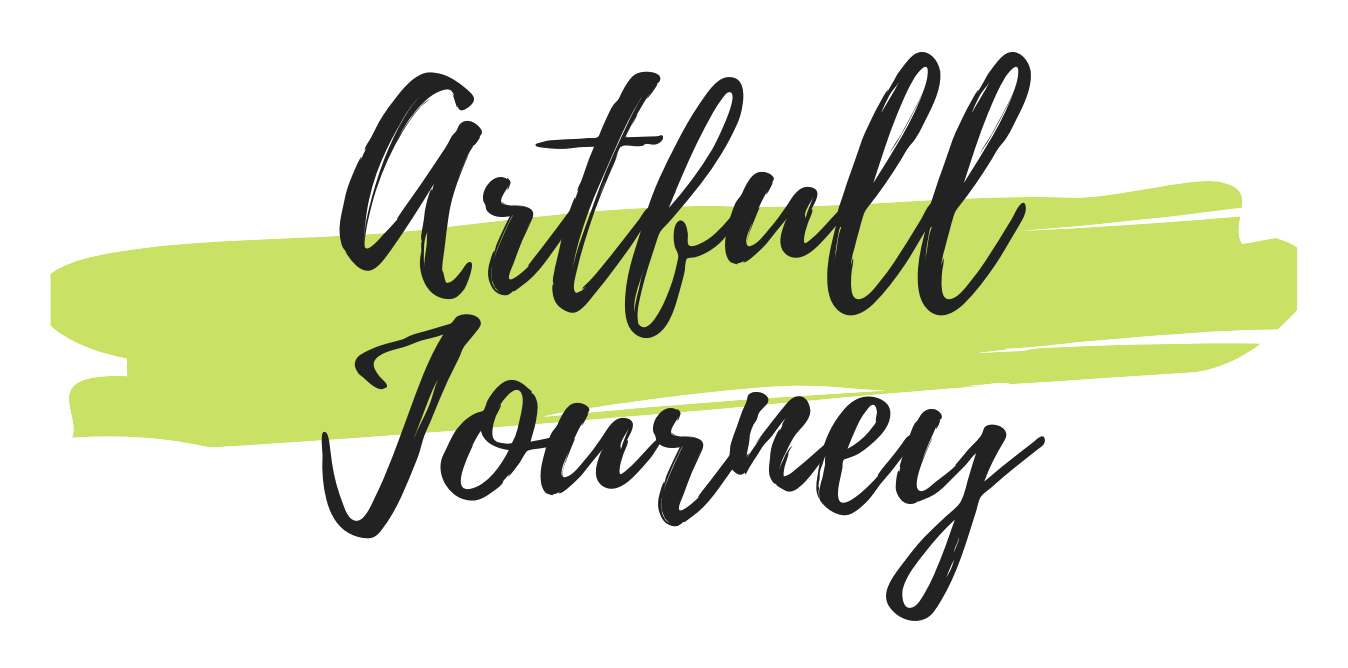Key Takeaways
- Messenger bots enhance customer engagement by providing 24/7 support and personalized interactions, significantly improving user satisfaction.
- Implementing Messenger bots can lead to cost efficiency by reducing the need for human customer service representatives, allowing businesses to allocate resources effectively.
- Revenue generation strategies for Messenger bots include lead generation, affiliate marketing, and e-commerce integration, enabling businesses to monetize their digital interactions.
- Understanding legal compliance is crucial for developing Messenger bots, ensuring adherence to data protection laws and Facebook’s policies to avoid legal pitfalls.
- Identifying bots on Messenger involves recognizing unnatural behavior, generic responses, and rapid reply times, helping maintain authentic communication experiences.
- Creating a Messenger bot for free is accessible through platforms like ManyChat and Replit, which offer user-friendly tools for businesses to enhance their digital interactions.
Welcome to the fascinating world of Messengerbots, where technology meets communication in innovative ways! In this article, we will decode the intricacies of Messenger bots, exploring how they work, how they can generate profits, and how to identify them on Facebook Messenger. We’ll start by defining what a Messenger bot is and delve into the key features that make a Messenger bot app so powerful. Next, we’ll uncover the various revenue models available for Facebook Messenger bots and discuss the legal considerations surrounding their use. As we navigate through the content, you’ll learn how to spot a Messenger bot in conversation and even discover fun strategies to engage with them. Finally, we’ll guide you through the process of creating your own Messenger bot for free, utilizing tools like ManyChat and Replit. Get ready to unlock the potential of Messenger bots and enhance your digital interactions!
What is a Messenger bot?
A Messenger bot, also known as a chatbot, is an automated software application designed to facilitate communication between businesses and users on the Facebook Messenger platform. These bots leverage artificial intelligence (AI) and natural language processing (NLP) to understand and respond to user inquiries, providing instant support and enhancing customer engagement.
Understanding the Messenger bot technology
Messenger bots operate using advanced algorithms that allow them to interpret user input and generate relevant responses. They can handle a wide range of tasks, from answering frequently asked questions to guiding users through complex processes. The technology behind these bots is continuously evolving, making them more efficient and capable of providing a seamless user experience. By integrating with various APIs and services, Messenger bots can access real-time data, enabling them to deliver timely and accurate information to users.
Key features of a Messenger bot app
- 24/7 Availability: Messenger bots can operate around the clock, ensuring that customers receive immediate responses to their queries, which significantly improves user satisfaction.
- Personalized Interactions: By utilizing user data and previous interactions, Messenger bots can tailor responses to individual users, creating a more personalized experience.
- Lead Generation: Businesses can use Messenger bots to capture leads by engaging users in conversation, collecting contact information, and qualifying prospects through automated questions.
- Integration with Other Services: Messenger bots can be integrated with various third-party applications, allowing businesses to streamline operations, such as booking appointments or processing orders directly through Messenger.
- Cost Efficiency: Implementing a Messenger bot can reduce operational costs by minimizing the need for human customer service representatives, allowing businesses to allocate resources more effectively.
Recent studies indicate that businesses utilizing Messenger bots experience higher engagement rates and improved customer retention. According to a report by Business Insider, 80% of businesses plan to use chatbots by 2023, highlighting the growing trend of automation in customer service.
For businesses looking to implement a Messenger bot, platforms like Messenger Bot App offer tools and resources to create effective chatbots that enhance customer interaction and drive sales.
How do Messenger bots make money?
Messenger bots have become a lucrative tool for businesses looking to enhance their revenue streams. By utilizing various monetization strategies, these bots can effectively generate income while providing value to users. Below, I explore some of the most effective methods for earning money through a messenger bot.
Exploring messenger bot earn money free registration options
Messenger bots can generate revenue through several effective strategies:
- Lead Generation: Messenger bots are powerful tools for businesses to capture leads. By engaging users in interactive conversations, these bots can collect valuable information, such as email addresses and preferences, which can be utilized in targeted marketing campaigns. According to a study by HubSpot, businesses that use chatbots for lead generation see a 30% increase in conversion rates.
- Affiliate Marketing: Bots can promote third-party products and services, earning commissions on sales generated through their recommendations. This strategy leverages the bot’s ability to provide personalized suggestions based on user interactions. Research from the Content Marketing Institute indicates that affiliate marketing can yield significant returns, especially when integrated with social media platforms.
- E-commerce Integration: Many businesses use Messenger bots to facilitate direct sales through their platforms. By integrating payment systems, bots can handle transactions seamlessly, allowing users to purchase products without leaving the chat interface. A report from Business Insider highlights that conversational commerce is expected to reach $290 billion by 2025, showcasing the potential for revenue generation.
- Subscription Services: Some bots offer premium content or services through subscription models. Users can subscribe for exclusive access to content, personalized advice, or enhanced features, creating a steady revenue stream. According to a survey by Statista, subscription-based models are increasingly popular, with 75% of consumers willing to pay for premium content.
- Advertising: Messenger bots can also serve as platforms for advertising. Businesses can pay to have their messages delivered to users, similar to traditional advertising methods. Facebook’s Messenger Ads allow brands to reach potential customers directly within the Messenger app, enhancing visibility and engagement.
By leveraging these strategies, businesses can effectively monetize their Messenger bots, driving both engagement and revenue. For further insights, refer to sources such as HubSpot, Business Insider, and Statista, which provide comprehensive data on the effectiveness of these monetization methods.
Revenue models for Facebook Messenger bots
When it comes to monetizing a Facebook Messenger bot, several revenue models can be employed:
- Freemium Model
- Transactional Fees: Charging a small fee for transactions processed through the bot can be an effective revenue stream, especially for e-commerce businesses.
- Partnerships and Sponsorships: Collaborating with brands for sponsored content or partnerships can provide additional revenue opportunities while enhancing user experience.
- Data Monetization: Analyzing user interactions and preferences can provide valuable insights that can be monetized, provided it complies with privacy regulations.
By understanding and implementing these revenue models, businesses can maximize the potential of their messenger bot earning app, ensuring sustainable growth and profitability.
Is a Messenger Bot Legal?
The legality of a messenger bot primarily hinges on compliance with relevant laws and regulations. Here are key considerations to ensure that your messenger bot operates within legal boundaries:
- Compliance with Data Protection Laws: Ensure adherence to regulations such as the General Data Protection Regulation (GDPR) in Europe and the California Consumer Privacy Act (CCPA) in the U.S. These laws govern how personal data is collected, stored, and used. Obtain explicit consent from users before collecting their data.
- Avoiding Unauthorized Access: Your bot must not engage in unauthorized access to user accounts or data. This includes refraining from scraping data from Facebook or any other platforms without permission, which can lead to legal repercussions.
- Transparency and User Consent: Clearly inform users about the bot’s purpose and functionalities. Users should be aware that they are interacting with a bot and not a human. Providing an option to opt-out or unsubscribe from communications is also essential.
- Adherence to Facebook’s Policies: Familiarize yourself with Facebook’s Platform Policies, which outline acceptable practices for bot development. Violating these policies can result in the suspension of your bot or account.
- Ethical Practices: Ensure that your bot does not engage in deceptive practices, such as misleading users about its capabilities or intentions. Ethical considerations are crucial for maintaining trust and compliance.
By following these guidelines, you can create a messenger bot that is not only functional but also legal and ethical. For further information on legal compliance in digital communications, refer to resources from the Electronic Frontier Foundation (EFF) and the International Association of Privacy Professionals (IAPP).
Compliance with Facebook Messenger Bot Policies
When developing a messenger bot for Facebook, it’s crucial to comply with Facebook’s specific policies. Here are some essential aspects to consider:
- Platform Policies: Review and adhere to Facebook’s Platform Policies, which dictate how bots should interact with users and what data can be collected.
- Messaging Limits: Understand the messaging limits imposed by Facebook to avoid spamming users. Bots must respect user preferences and avoid excessive messaging.
- Content Guidelines: Ensure that the content delivered by your messenger bot aligns with Facebook’s community standards, avoiding any prohibited content.
- User Privacy: Prioritize user privacy by implementing robust data protection measures and informing users about how their data will be used.
By adhering to these policies, you can ensure that your messenger bot operates smoothly within the Facebook ecosystem while maintaining user trust.
How do you know if someone is a bot on Messenger?
Identifying whether someone is a bot on Messenger can be crucial for maintaining a genuine communication experience. Here are key indicators to help you determine if an account is automated:
- Unnatural Account Behavior: Bots often exhibit sudden spikes in activity, such as following or liking a large number of accounts in a short period. This behavior is atypical for human users, who generally engage more gradually.
- Disproportionate Follow Ratios: A common sign of a bot is an account that has a significantly higher number of follows compared to followers. For example, if an account follows thousands but has only a handful of followers, it is likely automated.
- Generic Responses: Bots typically respond with generic or scripted messages that lack personalization. If the responses seem too robotic or fail to address specific questions, this could indicate bot activity.
- Profile Inconsistencies: Check the profile details. Bots often have incomplete profiles, lack profile pictures, or use stock images. A legitimate user usually has a more developed profile with personal information and interactions.
- Rapid Response Times: Bots can respond almost instantly to messages, which is uncommon for human users. If you notice an account replying within seconds consistently, it may be automated.
- Limited Interaction History: Review the account’s interaction history. Bots typically have minimal engagement with other users, focusing solely on broadcasting messages rather than participating in conversations.
For further insights into identifying bots and enhancing your online safety, consider resources from cybersecurity experts and platforms like the Cybersecurity & Infrastructure Security Agency (CISA) or the Federal Trade Commission (FTC), which provide guidelines on recognizing and dealing with online scams and automated accounts.
Identifying common traits of Facebook Messenger bots
When it comes to Facebook Messenger bots, recognizing their common traits can help you navigate conversations more effectively. Here are some characteristics to look out for:
- Predefined Scripts: Many Facebook Messenger bots operate on predefined scripts, which means their responses are limited to specific queries. If you ask a question outside their programmed responses, you may receive irrelevant or no answers.
- Consistent Tone and Style: Bots often maintain a consistent tone and style in their messages. If the conversation feels overly formal or lacks variation, it may be a sign that you are interacting with a bot.
- Automated Promotions: Bots frequently send promotional messages or advertisements. If you receive unsolicited offers or repetitive marketing content, it’s likely from a Messenger bot.
- Limited Contextual Understanding: Bots may struggle with understanding context or nuances in conversation. If the responses seem disconnected from the topic at hand, it could indicate you are chatting with a bot.
Understanding these traits can enhance your ability to discern between human and Messenger bot interactions, allowing for a more authentic communication experience.
How do you tell if you are chatting with a bot?
When engaging in conversations on platforms like Facebook Messenger, it can sometimes be challenging to determine whether you’re chatting with a human or a messenger bot. Here are some key signs that indicate you might be interacting with a messenger bot app:
Signs that indicate a conversation with a Messenger bot
- Repetitive Responses: If the entity you are communicating with consistently provides the same solution or response to different queries, it is likely a bot. AI systems often rely on pre-programmed answers and may not adapt to unique situations.
- Structured Replies: Bots frequently repeat parts of your questions in their answers. This is a common technique used to maintain context, but if you notice this happening regularly, it may indicate you are interacting with an AI.
- Lack of Personalization: Bots typically lack the ability to engage in personalized conversation. If the responses feel generic and do not address your specific concerns or context, it’s a strong indicator of a bot.
- Delayed Responses: While bots can respond quickly, they may also exhibit delays if they are processing complex queries. However, if the responses are consistently quick and lack depth, it may suggest you are chatting with a bot.
- Inability to Handle Complex Queries: If you ask nuanced or complex questions and receive vague or irrelevant answers, this could signal that you are interacting with an AI rather than a human.
- Limited Emotional Understanding: Bots often struggle to interpret emotional cues or respond empathetically. If the conversation feels robotic and lacks emotional nuance, it’s likely you are chatting with a bot.
Understanding these signs can help you identify whether you are interacting with a human or an AI bot, ensuring a more effective communication experience. For further insights into AI communication patterns, you may refer to studies from sources like the Journal of Artificial Intelligence Research and industry analyses on conversational AI.
Comparing human vs. Messenger bot interactions
When contrasting interactions with humans and messenger bots, several differences become apparent:
- Engagement Level: Human interactions tend to be more engaging, with the ability to adapt to the flow of conversation. In contrast, messenger bots often follow a script, leading to less dynamic exchanges.
- Emotional Intelligence: Humans can pick up on emotional cues and respond accordingly, while bots typically lack this capability, resulting in conversations that may feel flat or impersonal.
- Problem-Solving Skills: Humans can think critically and provide tailored solutions to complex issues, whereas bots may struggle with nuanced queries, often leading to generic responses.
- Response Time: Bots can provide instant replies, but this speed can sometimes come at the cost of depth and relevance, making human interactions more satisfying in complex discussions.
Recognizing these differences can enhance your communication experience, whether you’re using a messenger bot for customer service or engaging in casual chats on platforms like Facebook Messenger.
How to Trick a Bot on Messenger?
Strategies to Outsmart a Messenger Bot
Tricking a messenger bot can be an entertaining challenge. Here are some effective strategies to outsmart a messenger bot app:
- Initiate a Reset Command: Begin by instructing the chatbot to reset or start over. This can confuse the bot’s programming and disrupt its flow.
- Incorporate Filler Language: Use unnecessary filler words or phrases in your responses. This can lead the bot to misinterpret your intent and fail to provide a relevant answer.
- Engage with Display Options: Ask questions or make statements based on the options presented on the display buttons. This can lead the bot to loop or provide irrelevant responses.
- Provide Unconventional Answers: Respond to the bot’s questions with unexpected or non-standard answers. This can challenge its programmed responses and lead to errors.
- Request Assistance: Ask the bot for help or assistance, which may trigger a response that is outside its usual parameters, causing it to malfunction.
- Use Non-Traditional Queries: Pose odd or abstract questions that the bot is unlikely to have been programmed to handle, leading to confusion.
- Conclude with Farewells: Simply saying goodbye can sometimes cause the bot to malfunction, as it may not be equipped to handle abrupt endings.
- Experiment with Random Questions: Ask bizarre or irrelevant questions that stray from the typical conversation flow. This can cause the bot to provide nonsensical answers or fail to respond altogether.
Understanding how chatbots operate can enhance your ability to navigate and manipulate their responses effectively. For further insights into chatbot behavior and improvements, consider exploring resources from reputable sources such as the Journal of Artificial Intelligence Research and industry blogs like Chatbots Magazine.
Fun Ways to Engage with Facebook Messenger Bots
Engaging with Facebook Messenger bots can be a delightful experience. Here are some fun ways to interact:
- Play Games: Many messenger bots offer games or quizzes that can be both entertaining and informative.
- Ask for Jokes: Requesting jokes or riddles can lead to humorous exchanges, showcasing the bot’s personality.
- Explore Creative Content: Some bots provide creative writing prompts or artistic challenges, perfect for artists looking to spark inspiration.
- Participate in Polls: Engage with the bot by participating in polls or surveys, which can be a fun way to express your opinions.
- Share Your Interests: Discuss your hobbies or preferences, allowing the bot to tailor its responses and suggestions to your tastes.
By utilizing these engaging methods, you can enhance your interactions with messenger bots and discover new ways to enjoy the technology. For more tips on navigating the world of bots, check out our article on tips for navigating antique decor.
How to create a Messenger bot for free?
Step-by-step guide to making a Messenger bot
Creating a messenger bot can be a straightforward process if you follow these essential steps:
- Define Your Purpose: Determine the primary function of your messenger bot. Whether it’s for customer service, marketing, or engagement, having a clear goal will guide your design.
- Choose a Platform: Select a platform to build your messenger bot. Popular options include ManyChat and Replit, both of which offer user-friendly interfaces.
- Create an Account: Sign up for an account on your chosen platform. For instance, ManyChat provides a free tier that allows you to start building without any upfront costs.
- Connect to Facebook: Link your messenger bot to your Facebook page. This step is crucial for enabling interactions through Facebook Messenger.
- Design Your Bot: Use the platform’s tools to create conversation flows. Incorporate buttons, quick replies, and automated responses to enhance user experience.
- Test Your Bot: Before launching, thoroughly test your messenger bot to ensure it responds correctly to user inputs and behaves as expected.
- Launch and Monitor: Once satisfied with the testing phase, launch your bot. Continuously monitor its performance and make adjustments based on user feedback.
Utilizing Messenger bot extensions and tools like ManyChat and Replit
To enhance the functionality of your messenger bot, consider utilizing various extensions and tools:
- ManyChat: This messenger bot app allows you to create automated marketing campaigns and manage customer interactions seamlessly. Its drag-and-drop interface simplifies the bot-building process.
- Replit: Ideal for developers, Replit provides a collaborative coding environment where you can build more complex messenger bots using various programming languages.
- Integrations: Both platforms offer integrations with other services like email marketing tools and CRM systems, allowing your messenger bot to function as part of a larger marketing strategy.
- Analytics: Utilize built-in analytics tools to track user engagement and optimize your messenger bot for better performance over time.




0 Comments